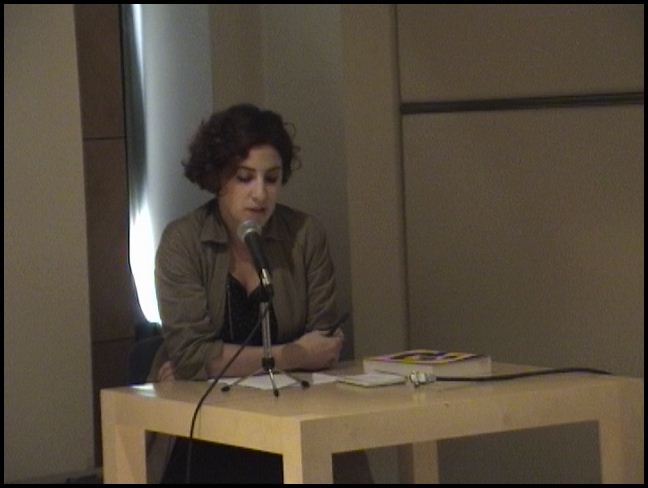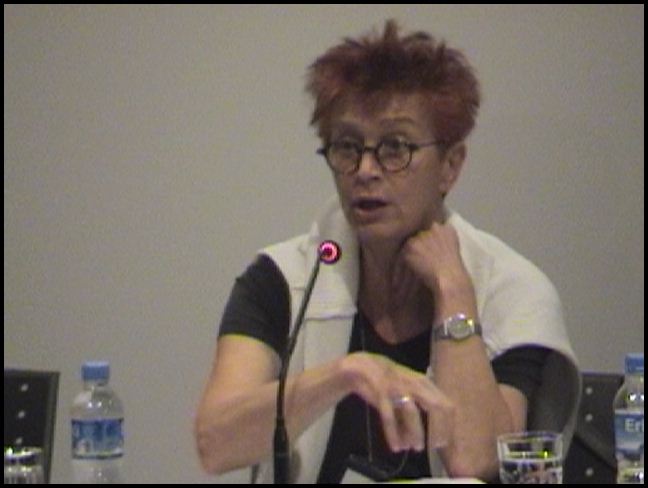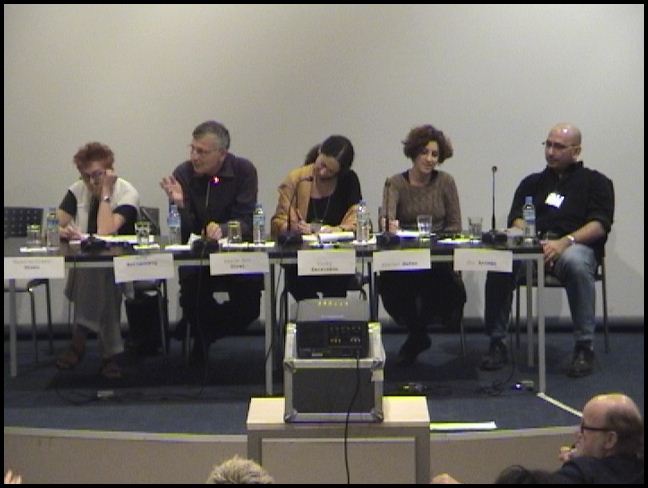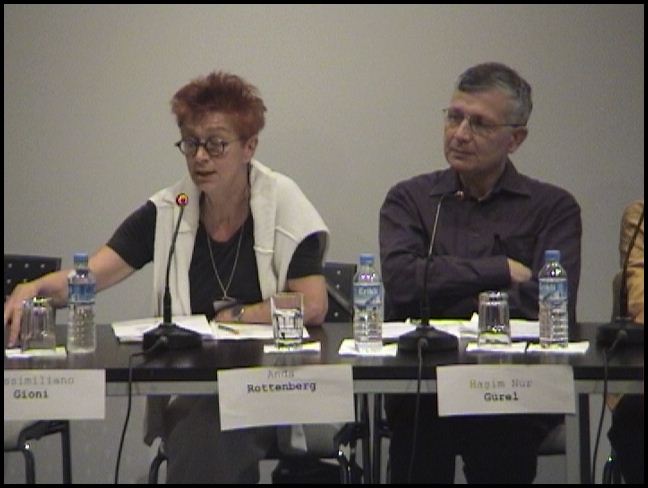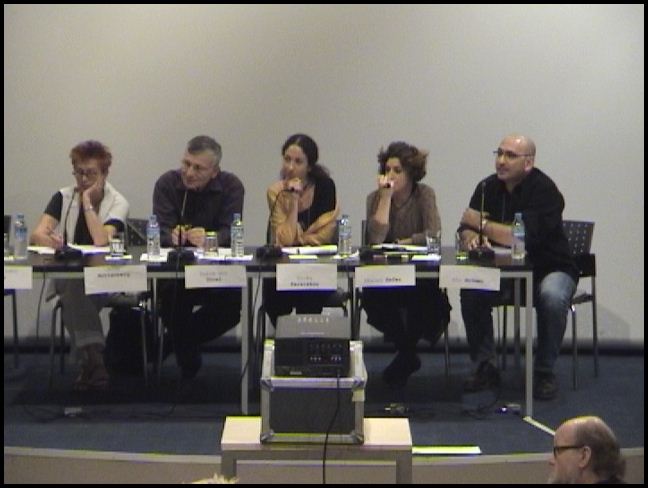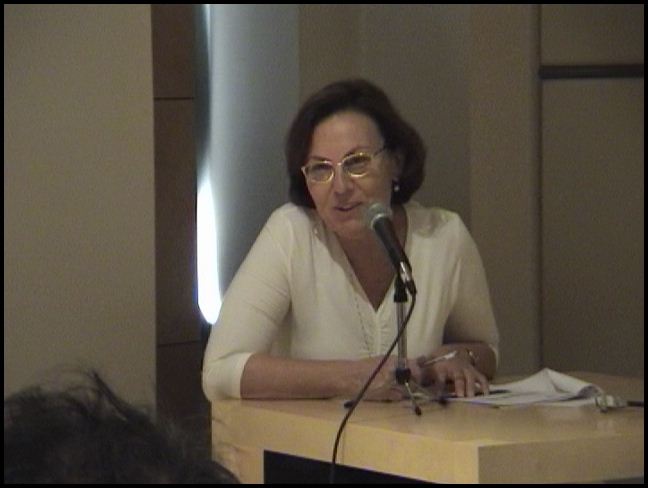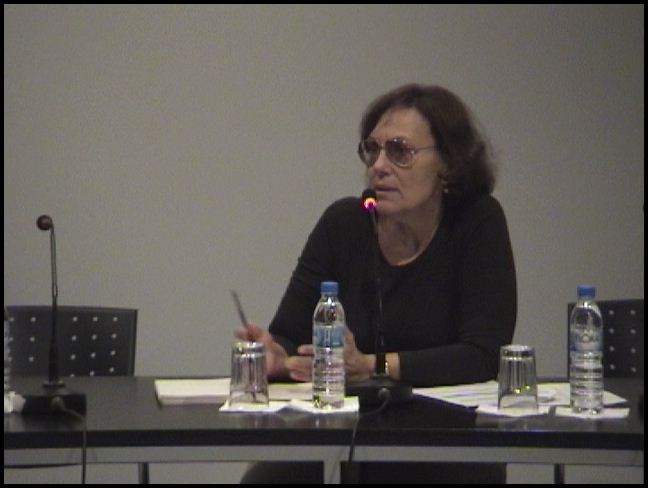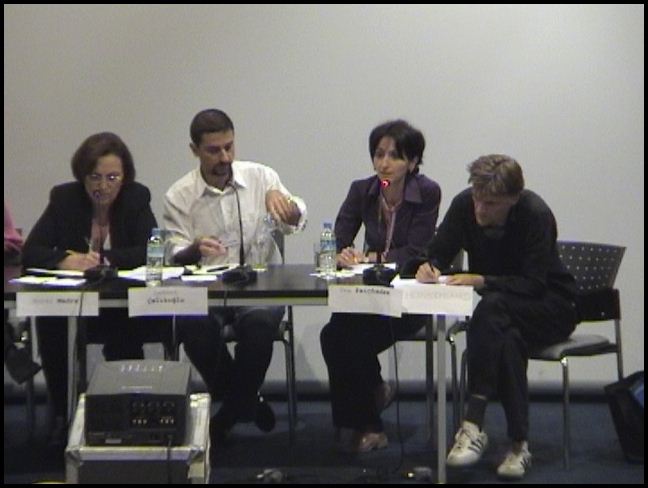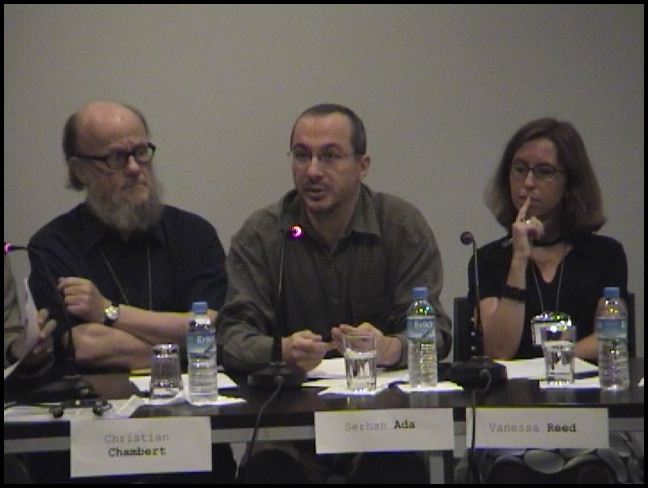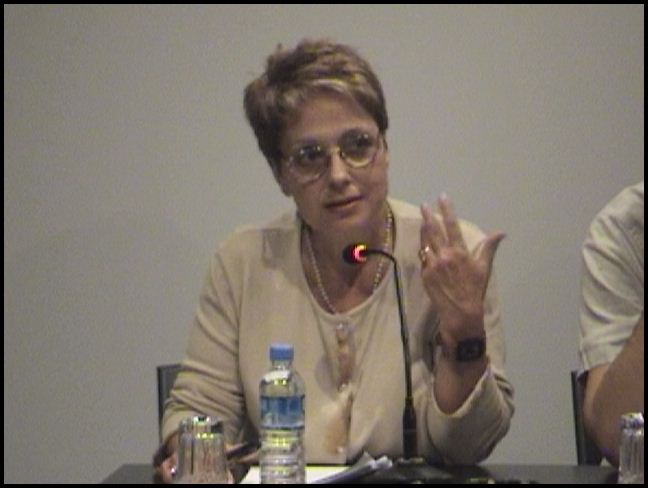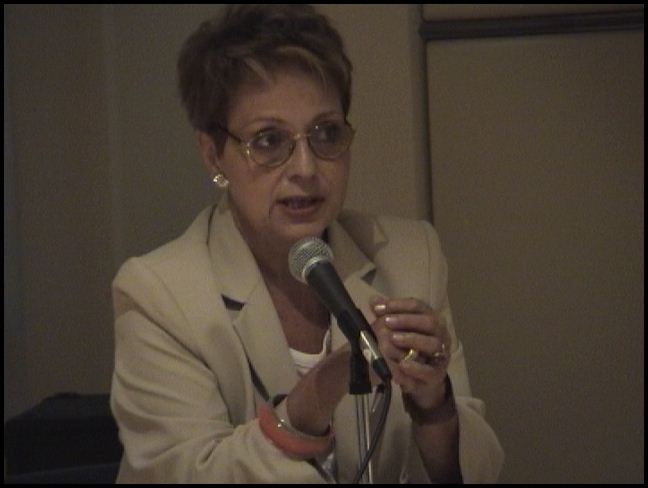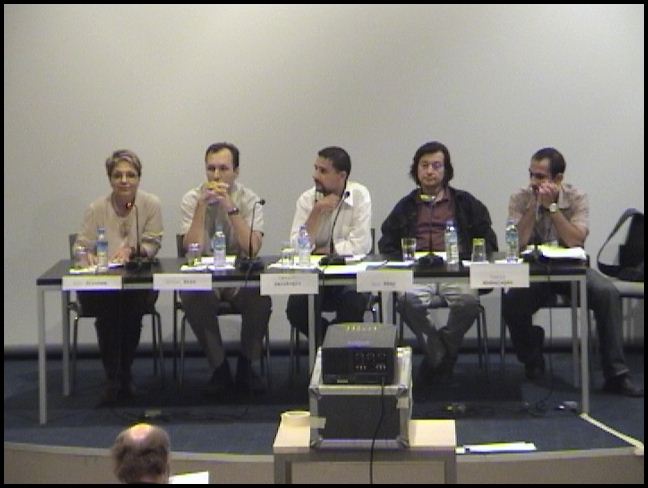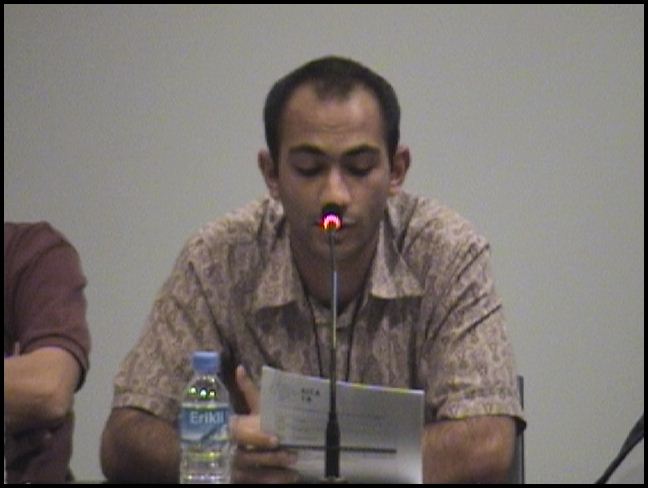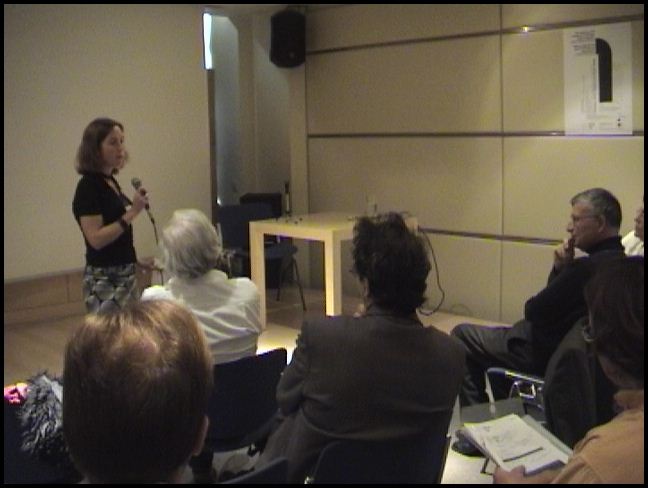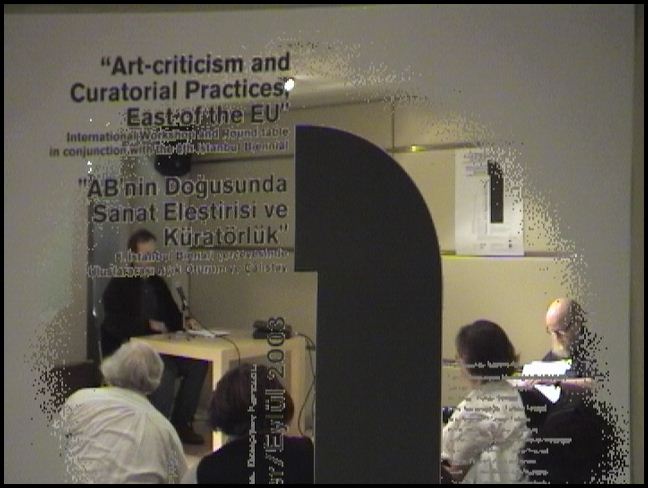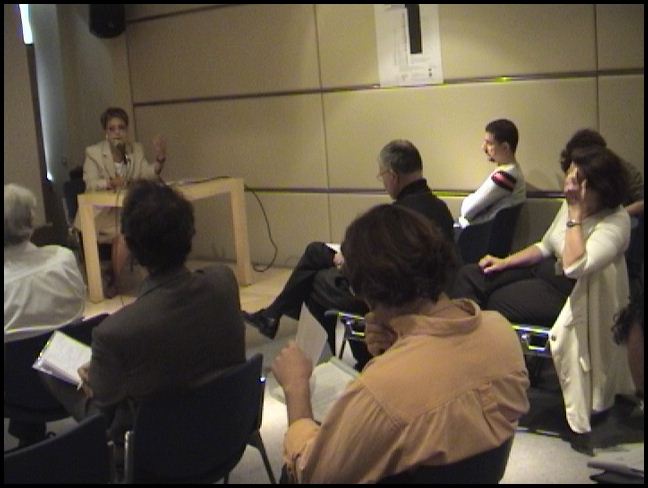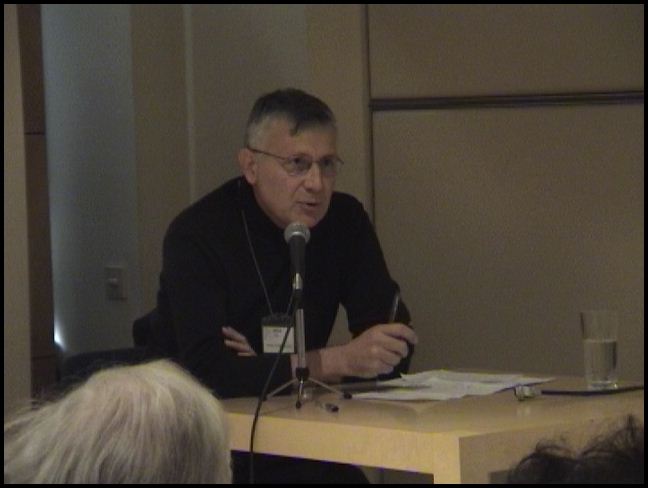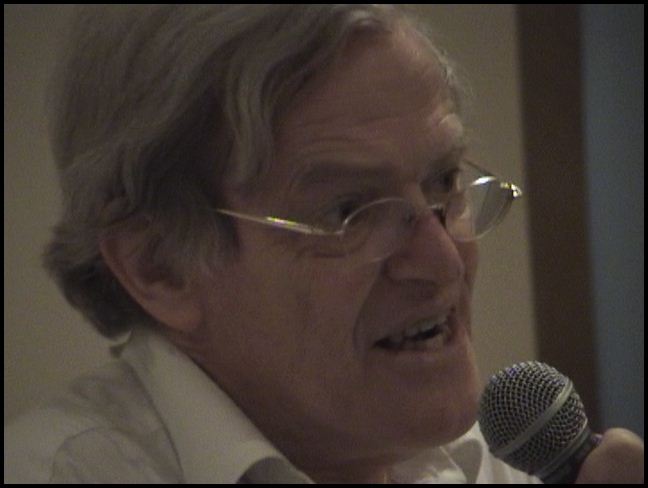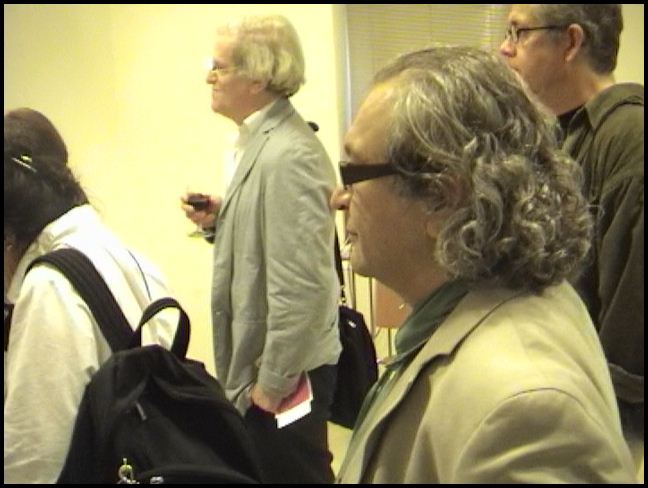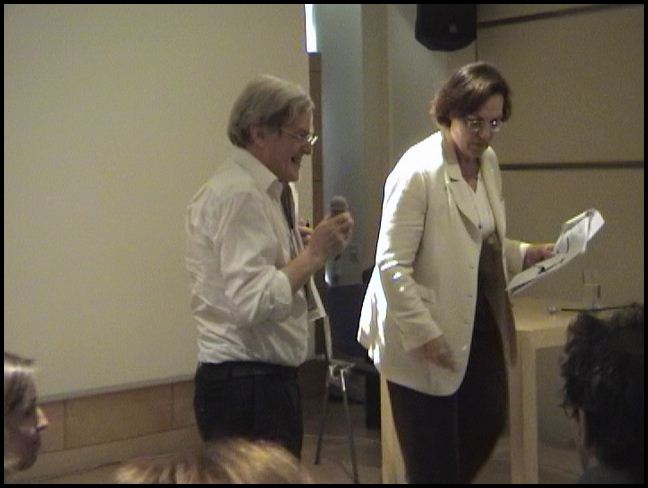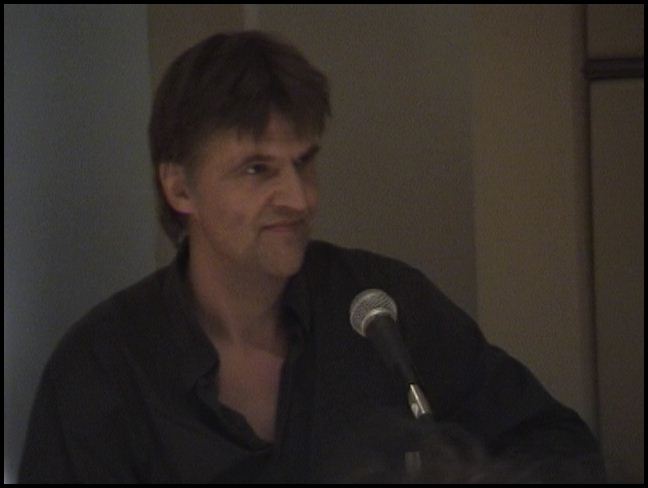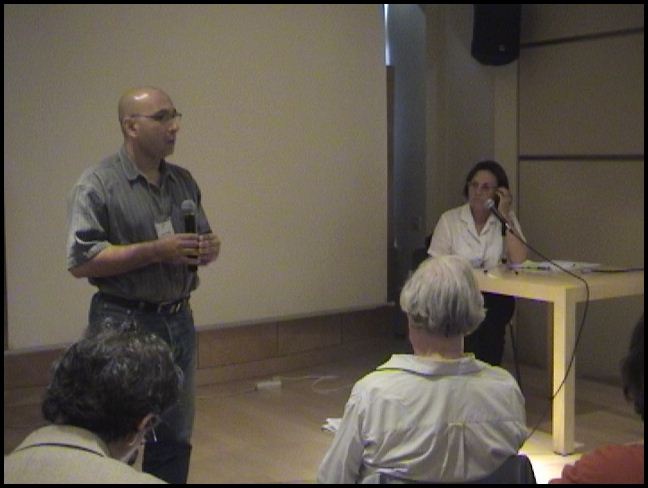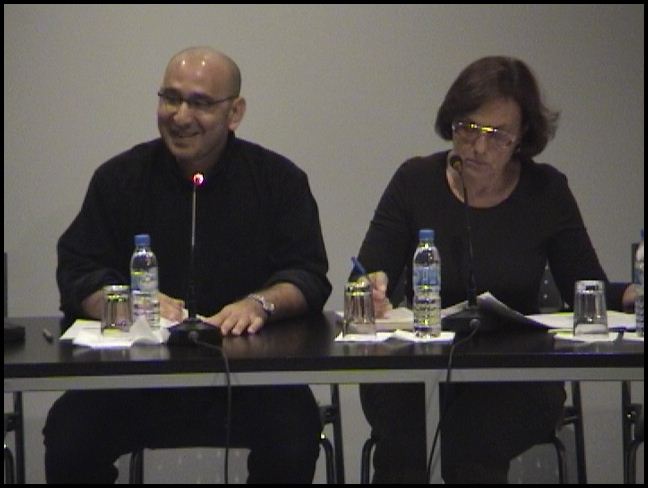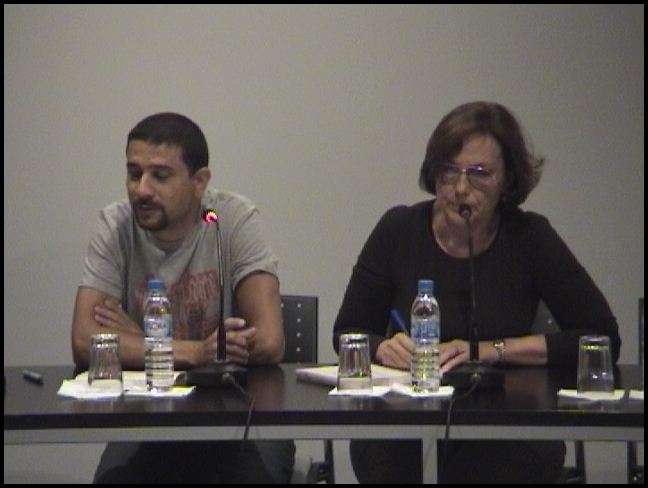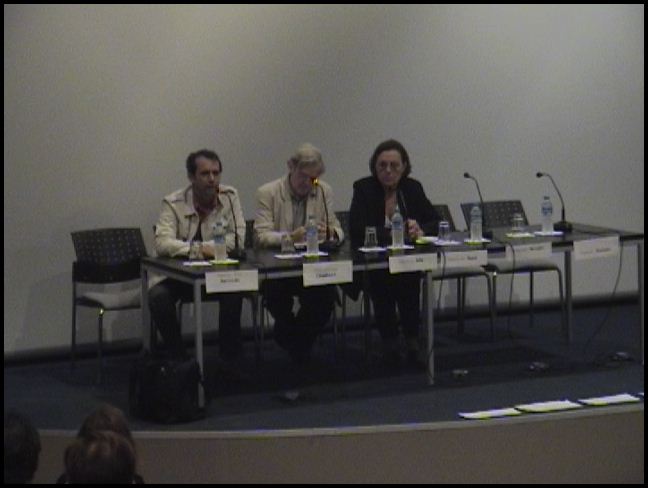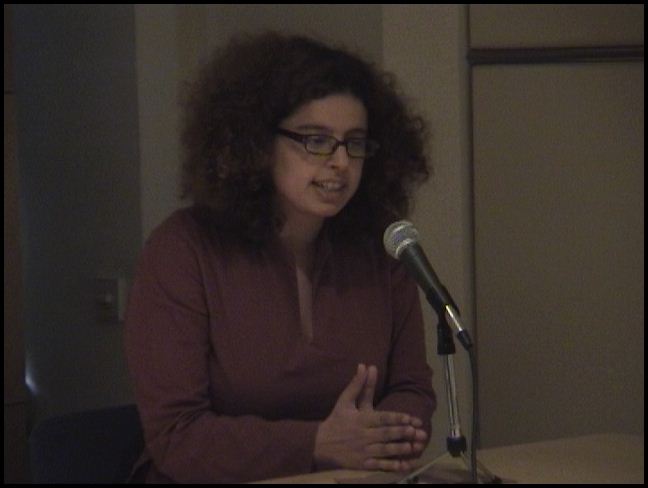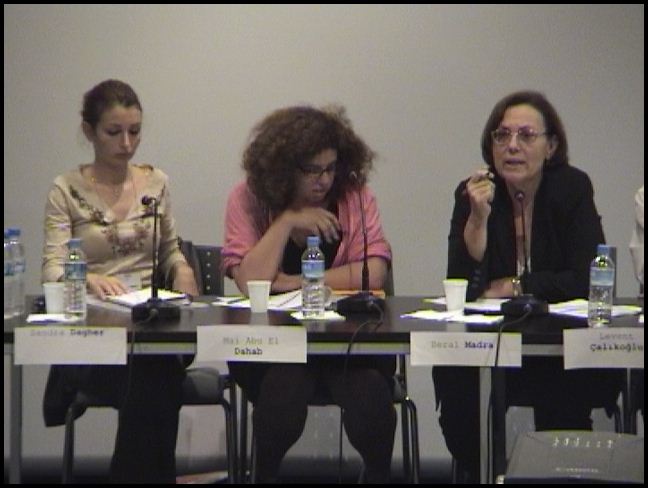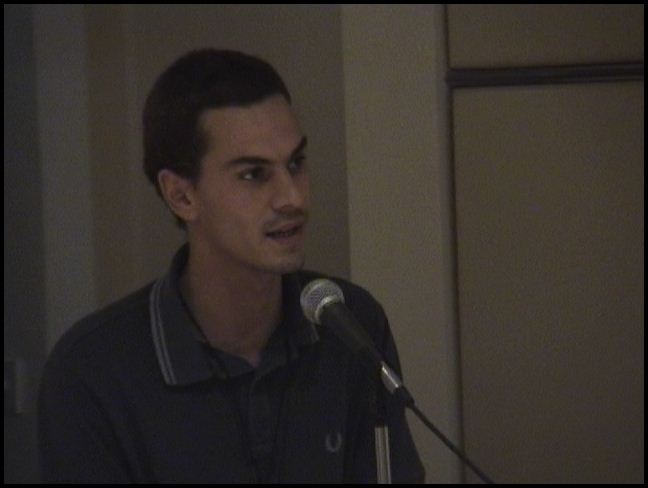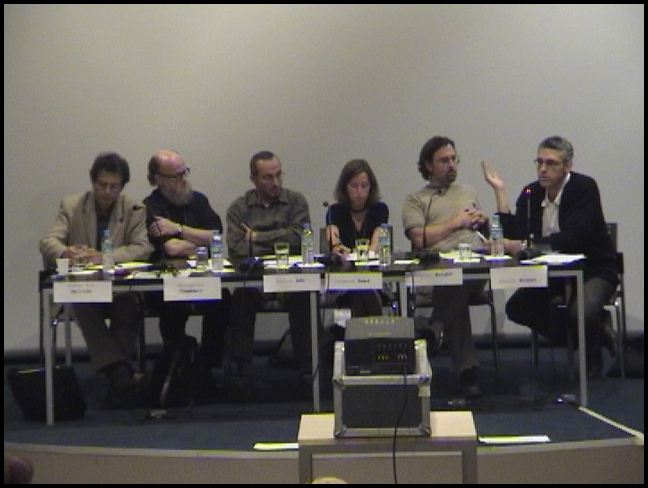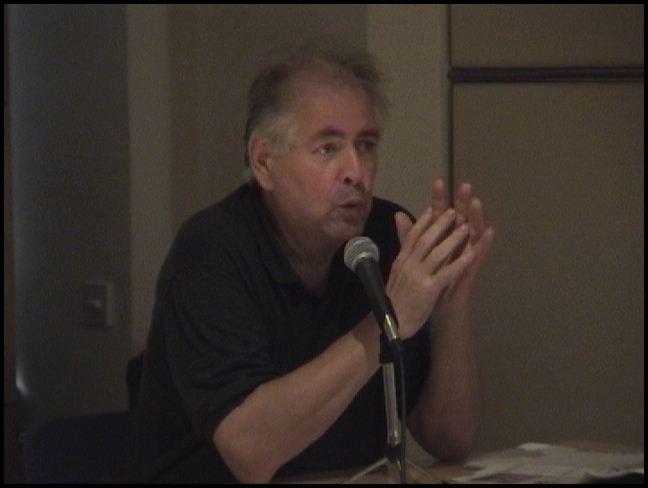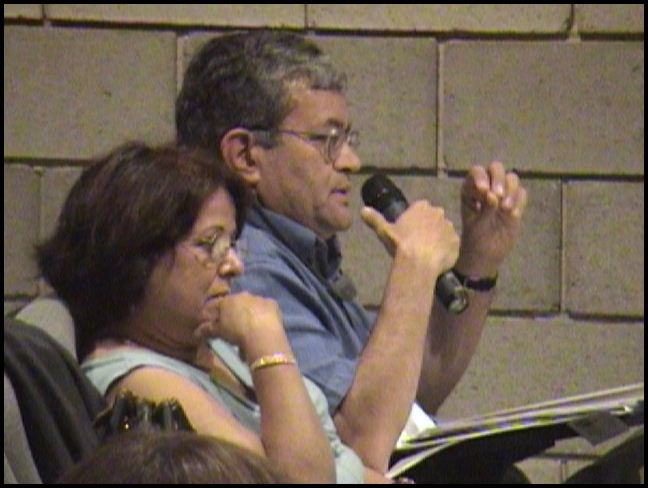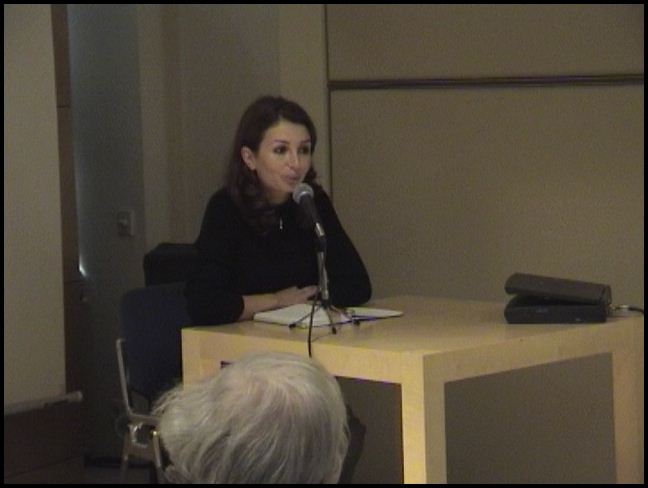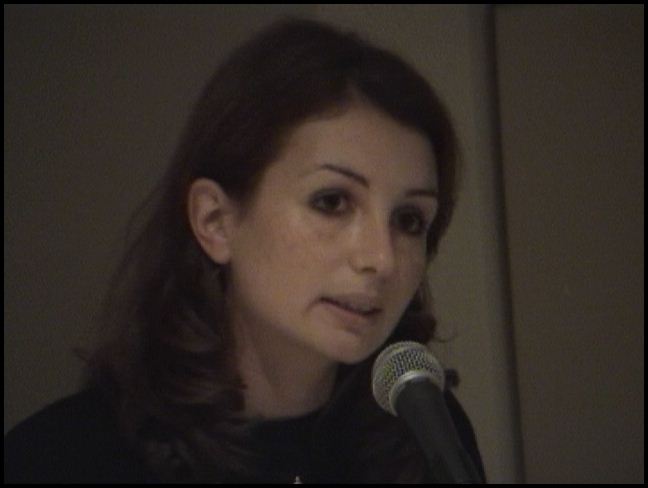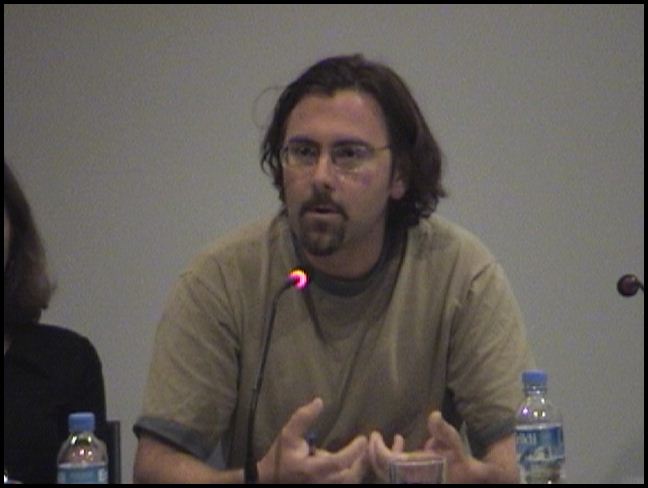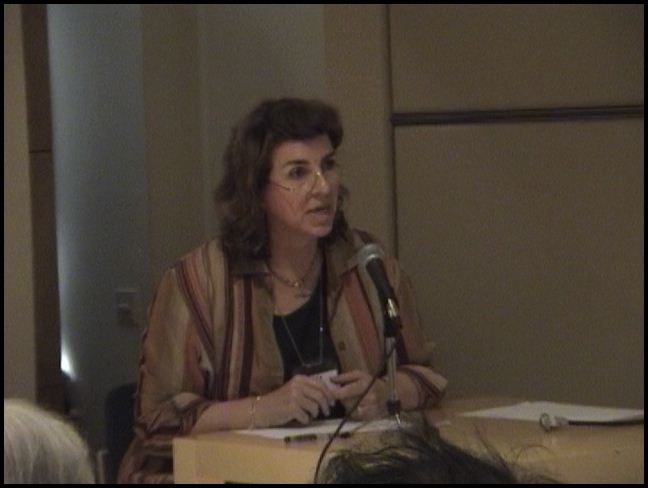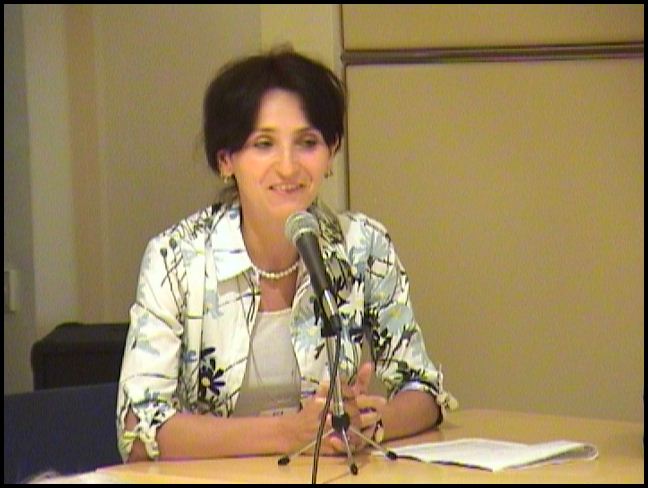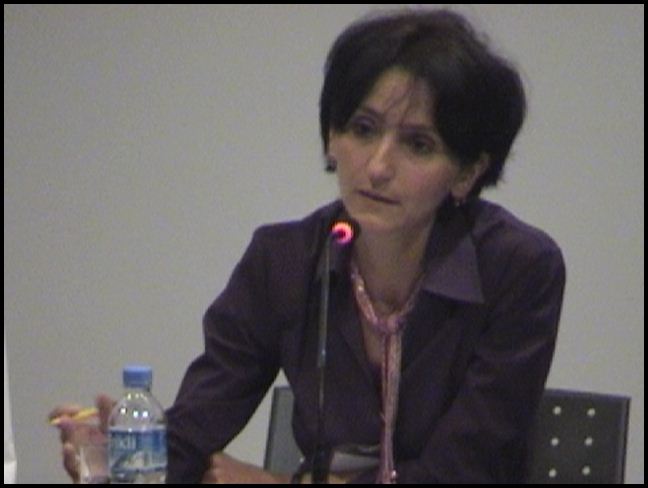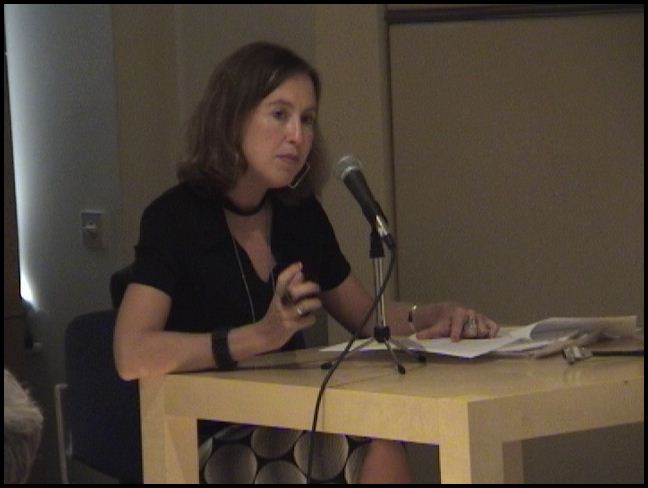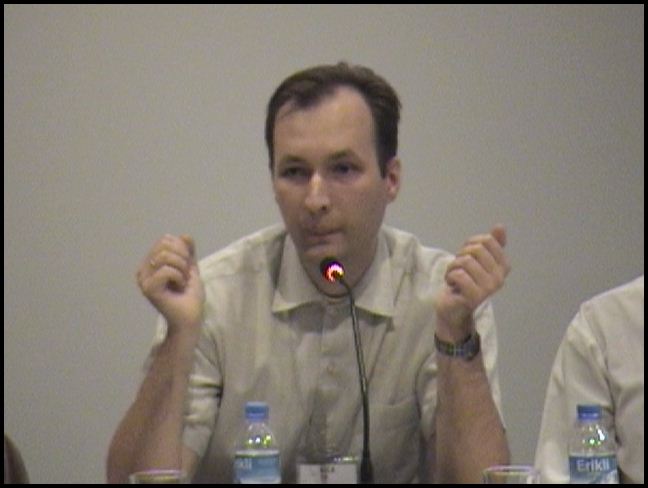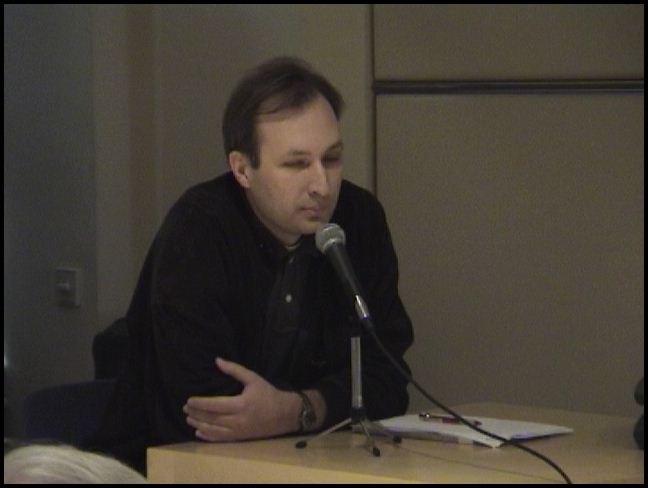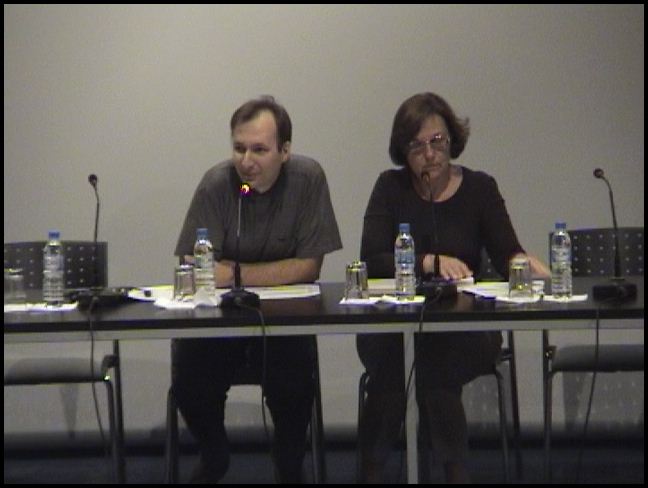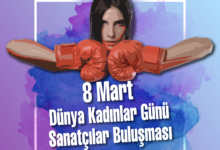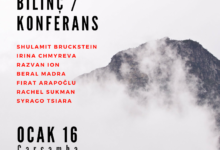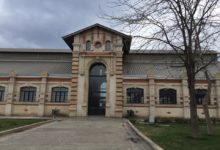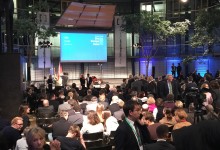“Art-criticism and Curatorial Practices, East of the EU”
A Symposium and Workshop in Conjunction with the 8th Istanbul Biennial
Istanbul, 18-21 September 2003
THE CONCEPT
The Turkish Section of the International Association of Art Critics (AICA Turkey) is organizing its first International Workshop and Symposium of Art Criticism and Curatorship in conjunction with the 8th Istanbul Biennial with the support of the European Cultural Foundation (Amsterdam), the International Bureau of AICA (Paris), the International Foundation Manifesta (Amsterdam), Istanbul Bilgi University and the Istanbul Foundation for Culture and Arts. The Symposium is conceived as a critical and theoretical contribution to the 8th Istanbul Biennial and the accompanying workshop is designed as a training opportunity for young professionals from the region East of the EU, who are engaged with the practice of art criticism, understood as an activity that ranges from writing about, to curating, exhibitions.
The Symposium which will take place at Istanbul Bilgi University on 20th September 2003 will focus on defining current practices in international networking and co-operation, available models and tools for co-production, funding opportunities and curatorial independence, as well as on the Istanbul Biennial, as a model within the current biennale system and within the cultural infrastructure of the region.
The 8th Istanbul Biennial, curated by Dan Cameron, will develop an artists’ view of the concept of justice, as one of the most pressing issues of the day. The “concept of justice”, which John Rawls has been working on since the beginning of the 1970s, is derived from Kantian philosophy and mainly focuses on the standpoint of the individual. This theory has shown up some of the ambiguities in the relationship between the individual and society, in all the contexts where society is dominated by a set of religious beliefs. Conceived before the war in Iraq, the concept has now accumulated multiple meanings and the Biennial has gained a new aspect, providing the basis for a new reading of some of its tenets.
We are very well aware that, within the course of globalisation, the concept of individual justice has transcended all national borders and state boundaries and, in the process, acquired something of a trans-national (extra-national) character, which is unmistakeably associated with popular appeals to public opinion and to the legislature for the enactment of some form of blood vengeance.
The participants in the Symposium will be invited mainly to discuss the issue of “poetic justice”, which is a crucial theme in relation to current political and economic development in the region. Specifically in relation to Dan Cameron’s outline concept for the exhibition, the potential topics for discussion will include the following:
To what extent may art be regarded as a valid medium for attempting to create a consensus, to effect a reconciliation of views or to develop arguments in favour of a redefinition or enactment of justice?
Does, can, or should the International Art World act like Amnesty International, the World Wildlife Fund or Greenpeace as a citizens’ advocacy group, which aims at bringing justice into the world?
Can we say that “biennials and other globally-oriented exhibitions create an environment in which the viewer experiences a temporary but nonetheless palpable representation of the entire world under a single roof or series of roofs”?
Do we think that the Biennial and other such activities have a lasting effect in our region?
And, finally, which artworks came closest to matching up to the Curator’s initial statement of intent? And in what ways may they be said to have done so?
The Workshop is designed to provide a forum for discussion and the exchange of information for the young participating professionals, who are all actively engaged in the fields of visual art and culture, as critics, curators, journalists, TV producers, academics and theoreticians. Preference has been given to participants from Turkey, Greece, Egypt, Lebanon, Syria, Azerbaijan, Georgia, Serbia Montenegro and Macedonia.
Over the past two decades, Istanbul, which provides the backdrop to the Workshop, has evolved into an important site for contemporary art exhibitions, epitomised by the Istanbul Biennial. While the city itself plays a commanding role, as a global marketplace for capital and a production site for the information economy, its cultural life has increasingly assumed new forms and dimensions. The city offers a wide diversity of cultural experience, even though the process of globalisation has introduced a strong unifying corporate culture, which is fairly dominant in the new areas of urbanisation. This diversity derives from the continuing stream of immigration from all parts of Anatolia, in the past and neighbouring countries to the North, South and East, up to the present. The city appears as an integral part of the micro and macro narratives, representations, simulations and metaphors, which have characterised the heterogenous art production of the past few years, since the beginning of the 1990s. In the paintings, photographs, videos and installations of a large number of artists we can trace, recognise and perceive Istanbul as a primary source of inspiration, even when it does not directly appear as the principal theme or subject of the work. Within the wider scope provided by the Biennial as a whole, the Workshop will investigate the nature of the city itself and provide young professionals from the region with an insight into the inspiration which it has provided to a wide range of artistic practitioners.
At the same time, the Workshop sessions will develop the themes of networking, co-curatorship and co-production, in the light of current and future needs for cultural interaction with the EU, and with the EU’s models for cultural networking and inter-related art systems. The Workshop will further address and examine notions of the region, as a shared cultural space with a common historical/traditional background, and as a springboard for the development of a marked cultural, artistic and religious diversity. Evidently, these issues are greatly related to the program of the EU called Enlargement of Minds.
This has been conceived as an experimental Workshop, aimed at laying concrete foundations for a variety of concerted actions, including co-productions and collaborative project of all kinds. The discussions will focus on ways of conceiving and implementing a number of joint initiatives and will, it is hoped, lead to a positive commitment to future collaboration between individuals and representatives of a core group of institutions.
The one and a half days of theoretical discussions and presentation of practical examples will include a half-day visit to the venues of the Istanbul Biennial, which will serve as a model to the participants. The participants will also attend the official inauguration of the Biennial. The Workshop will end with a Round Table discussion lasting half a day, in which the public will be invited to take part.
The participants will also attend the Symposium.
A publication in two languages (English-Turkish) of the Workshop lectures and results as well as Symposium papers is being planned together with Istanbul Bilgi University and other potential sponsors.
It is our Association’s aim to held regular symposia and workshops on art-criticism, curatorial practices, and art and cultural theory in Turkey. We hope that this inaugural event will serve as a forum for the exchange of high-quality ideas on contemporary artistic issues between internationally renowned practitioners and a younger generation of professionals from the region.
Report on the Conference
International Workshop and Round-table in conjunction with the 8th International Istanbul Biennial entitled
“Art-criticism and Curatorial Practices, East of the EU”
18th- 21st SEPTEMBER 2003
in BORUSAN ART AND CULTURE CENTER, ISTANBUL and ISTANBUL BILGI UNIVERSITY.
It was organised by AICA INTERNATIONAL, (Paris) and INTERNATIONAL MANIFESTA FOUNDATION and the newly founded AICA-TURKEY with the patronage of EUROPEAN CULTURAL FOUNDATION in collaboration with Istanbul Bilgi University, Borusan Culture and Art Centre, European Cultural Association and Bir Culture and Art Centre.
This international workshop and roundtable was not only conceived as a critical and theoretical contribution to the 8th Istanbul Biennial, but it also focused on defining current practices in international networking and co-operation, on available models and tools for co-production, on funding opportunities and curatorial independence.
The Istanbul Biennial, as a modular part of the recently emerging international system of biennials and the cultural infrastructure of the region to the “east of the EU”, is mostly seen as a space for experience and training for young professionals who are engaged with curatorial practice, art criticism, and cultural journalism. Whether it fulfils this function or not, has been discussed during the sessions. Although the participants came from different cultural scenes, the topics, questions, and problems raised and debated during the sessions were surprisingly similar. Among the common themes were the institutional background of art production and its effects on the public sphere the art production and its relations to the official discourses. It was agreed that, in most of the non-EU countries the official institutional background is conservative and incompetent and needs to be reformed by taking know-how from EU countries, which are offering programmes and funds through their institutions. The geographic and contextual diversity of the positions, visions and ethical orientations of the curators and the art-critics were another topic in which the perfectionism that characterizes the international mainstream art with its strong links to the official institutions, the private sector and the art market was accentuated. Curators coming to non-EU countries from these sophisticated environments are misinterpreting and underestimating the local art scenes and they also fail to contact the intellectual groups and individuals. It has also been concluded that the main obstacles on the way to a multi-lateral collaboration are the differences between the infrastructures (education systems, policies and administrative philosophies of official and private institutions) and the markets of the cultural products as well as the absence of theoretical exchange. To begin with 8th Istanbul Biennale was reviewed in its controversial title, in the statement and the position of the curator, coming from USA in juxtaposition to the works exhibited. The speakers were united in the fact that the title of the biennial ‘poetic justice’ is a very precarious concept in terms of the current historical moment in Middle East and the geographical position of Istanbul. The concept opens a debate, but it also reveals the fact that – despite the well wishers and optimists – art fails to change world politics, particularly in these territories. However, the participants agreed that this biennial has gathered young generation of artists – known and unknown- and had a very efficient organisation.
The most appreciated works in Istanbul Biennale were of Mike Nelson, Fiona Tan, Kutlug Ataman, Bjorn Melhus, Monica Bonvicini, xurban, Tania Bruguera, Fernando Bryce, Filipa Cesar, Ergin Cavusoglu, Danica Dakic, Emily Jacir, Shahram Karimi, Marlene Mc Carty, Doris Salcedo, Song Dong, Monika Sosnowska, Jennifer Stainkampf, Nalini Malani. During and between the sessions, the participants from the EU countries were seeking moments and spaces to communicate and to transmit their knowledge and experience, whereas the participants from the non-EU countries were looking for cooperation and collaboration
The workshop and round-table was sponsored by ECZACIBAŞI HOLDING, OM PUBLISHING, BEYOĞLU MUNICIPALITY
The participants were Farid Abdoulayev (artist/curator, Azerbaijan), Serhan Ada (Istanbul Bilgi University, writer,Turkey), Ali Akay (Mimar Sinan University, Department of Sociology, Turkey), Esra Aliçavuşoğlu (Marmara University, Faculty of Fine Arts, Turkey), Ahu Antmen (Marmara University, Faculty of Fine Arts Turkey), Susan Barnes Bubic (Director of british Council, Istanbul, UK), Ramon Tio Bellido (AICA International General secretary,France), Rene Block (Director of Fredericanum, Germany), Jeroen Boomgaard (AICA Netherlands), Pascal Brunet (France), Levent Çalıkoğlu (Yildiz Technic University, Faculty of Art and Design, Turkey), Christian Chambert (AICA Sweden), Sandra Dagher(Director, Espace D, Lebanon), Mai Abu El Dahab (curator, Egypt), Cem Erciyes (Editor, Radikal,Turkey), Zoran Eric (curator, Serbia-Montenegro), Eva Fotiadi (curator, Macedonia), Hedwig Fijen (Director Manifesta Foundation,Denmark), Haşim Nur Gürel (Director Eczacibasi Virtual Museum, Turkey), Massimiliano Gioni (curator, Italy), Khaled Hafez (artist, writer, Egypt), Henry Meyric Hughes (President, AICA`International, UK), Vicky Karaiskou ( curator, Greece), Beral Madra (President AICA Turkey Turkey), Mahir Namur (President European Cultur Association, Turkey), Tea Paichadze (curator, Georgia), Vanessa Reed (Director, European Cultural Foundation, Netherlands), Anda Rottenberg (AICA Poland), Sajid Rizvi, ( Editor, UK),Efi Strousa ( President, AICA Hellas, GR), Stephen Wright (art critic, writer, Canada/France).
Beral Madra /November 2003-11-14
AICA TÜRKİYE KURULUŞU VE ETKİNLİĞİ
Radikal için söyleşi, Ocak 2006
1 – AICA International”dan söz eder misiniz? Ne zaman kurulmuş, uluslararası sanat ortamındaki etkinliği ve önemi nedir?
Uluslararası AICA 1948 ve 1949’da Paris’de UNESCO merkezinde yapılan iki kongre ile kurulmuş. Amaç, savaş sonrasında çağdaş yaratıcılığı desteklemek, sanat eleştirmenlerinin sanatçılara ve topluma karşı sorumluluklarını belirlemek ve sanat tarihine katkılarını geliştirmek olarak belirlenmiş. 1951’de NGO (STK) olarak kabul edilmiş. Görsel sanatlarda eleştirel disiplinlerin desteklenmesi, yöntemlerin ve ahlaki temellerin belirlenmesi, derneğin üyelerinin haklarının savunulması, uluslararası bilgi akışının ve iletişimin sağlanması, farklı kültürlerin yakından tanınması ve anlaşılması, gelişmiş ülkelerle gelişmekte olan ülkeler arasında sanatsal iletişimin kurulması gibi ana ilkeler geçerliğini koruyor. 71 ülkede şubesi olan AICA’nın kongreleri küresel kültür gelişmelerine temel hazırladı.
2 – AICA Türkiye’nin kuruluşundaki en önemli motivasyon ne oldu? Üyeleriniz kimler…
Türkiye’deki kültür sanayii gelişmeleri AICA gibi bir derneğin kurulmasını kaçınılmaz kıldı; kültür sanayii içinde eleştirel ve görsel düşüncenin önemi bu tür üretimi yapan insanların ortak hak, çıkar ve eylemler açısından biraraya gelmelerine neden oldu. İlişkilerim dolayısıyla bu işi başlatmak da bana düştü. 90’lı yılların ortasında uluslararası AICA bağlantılı olarak bir dernek kuruldu, ama bir sure sonra etkisiz kaldı. 1998’de Modernlikler ve Bellekler sergisi sırasında İstanbul’a davet ettiğimiz Ramon Tio Bellido (Uluslararası AICA genel sekreteri) şube kurmamı istedi. İstanbul Bilgi Üniversitesi Sıraselviler kampüsünde sanat ve kültür alanında etkin olan 15-20 kişiyi biraraya topladım; ancak toplantı sonucunda kimse dernek kurma sorumluluğu üstlenmek istemedi. 2002’de başkan Kim Levin ve ondan sonra başkan olan Henry Meyric Hughes’in ısrarlarıyla derneği kurmayı üstlendim.
AICA Türkiye bir STK’dır ve zaman içinde 20.yy ve günümüzü kapsayan sanat tarihi, sanat ve kültür üretimi ve etkinlikleri alanlarında çalışan eleştirmen, sergi yapımcısı (küratör), sanat uzmanı/danışmanı, sanat ve kültür yayıncısı ve editörü, TV sanat ve kültür programcısı, belgesel film yapımcısı gibi meslekleri çatısı altında toplayacaktır.
4 – 50 yıl önce AICA’nın Türkiye’de yaptığı Genel Kuruldan söz eder misiniz? Nasıl gerçekleşmiş, önemi neydi…
Uluslararası AICA’nın 1954’de İstanbul’da yapılan kongresi kuşkusuz rastlantısal değil; Türkiye’nin NATO üyesi olmasının ve de Batı ile kültürel ilişkisini pekiştirmesinin sonucu olsa gerek. O dönemdeki sanatsal üretimin de bu tür bir uluslararası heyetin önüne çıkma gereksinimi olsa gerek. Bilindiği gibi, Aliye Berger Uluslararası Sanat Eleştirmenleri Derneği’nin 1954 yılında İstanbul’da toplanan kongresi nedeniyle Yapı Kredi Bankası’nın düzenlediği yarışmada ilk yağlı boya çalışmasıyla birincilik ödülünü aldı. Dikkatimi çeken başka bir özellik de bu işe özel sektörün destek vermesi; belki de günümüzdeki anlamıyla ilk sponsorluk eylemi sayılır, bu. Kuşkusuz bir kadın sanatçının ödül almış olması da rastlantısal değil. Ancak, bu olayın Türkiye’deki resim ve sanat eleştirisi gelişmesine ne boyutta katkı sağladığını tartışmak gerekiyor.
5 – AICA Türkiye olarak kısa sürede pek çok etkinlik yaptınız, bunlardan söz eder misiniz?
AICA Türkiye, daha kurulma aşamasında sanat eleştirisi ve küratörlük üstüne uluslararası bir Çalıştay ve Açıkoturumu 8.İstanbul Bienali çerçevesinde Avrupa Kültür Vakfı (Amsterdam) fonuyla, Uluslararası AICA Bürosu (Paris), Uluslararası Manifesta Vakfı, Avrupa Kültür Derneği, İstanbul Bilgi Üniversitesi, Borusan Kültür ve Sanat Merkezi, Bir Kültür Sanat Merkezi işbirliğiyle ve Eczacıbaşı Holding, Om Yayınevi ve Beyoğlu Belediyesi sponsorluğunda gerçekleştirildi. Bu etkinlik uluslararası ve Türkiye sanat/kültür ortamına sunulmak üzere kitaplaştı. Kitap, Türkiye kültür ve sanat ortamının, küresel kültüre güncel katkısı olmaktan öte, AB’nin kültür politikaları değişirken, özellikle Ortadoğu ve Güney Kafkasya’nın AB’ye açılan merkezi sayılan İstanbul’da gerçekleşen sanat/kültür tartışmalarının, AB ülkelerine yansıtılması açısından önemli bir işlev de taşımaktadır. 8 Mayıs Avrupa gününde Avrupa Kültür Derneği ile ortak bir sempozyum düzenledik; bu da kitaplaşıyor.
6 – Birinci yılınızı iki ödülle perçinliyorsunuz. Ödülleri kimlere verdiniz, neden?
Ödülün çağdaş sanat alanındaki çalışmalarıyla yerel ve uluslararası platformda öncü bir tavır sergileyen sanatçılara verilmesi kararlaştırıldı. Aliye Berger’in zamanın ruhuna yanıt veren, sanatın yönünü değiştirebilen, topluma yeni bir vizyon sunan ilerici, sıra dışı ve yürekli tutumu, ödül verilecek sanatçının seçiminde bir kıstas olmuştur. AICA Türkiye yönetim kurulu bu yılki ödülün, Sarkis ve Füsun Onur’a verilmesine karar vermiştir. BU etkinlik için bize Yapı Kredi Kültür Sanat Yayıncılık A. Ş. ve Mimar Sinan Güzel Sanatlar Üniversitesi destek veriyor.
7- Sanatın her alanında eleştiri yoksunluğundan yakınılırken, Türkiye’nin hem de uluslararası bir sanat eleştirmenleri derneği olması bu alanda yeterli birikimi olduğunu mu gösteriyor, ne dersiniz?
Yaşadığımız bölgede- yakın geçmişin özgürlük travmalarında karşın – en gelişmiş demokrasi Türkiye’de ve eleştirel düşüncenin sağlam temelleri var; geleneksel, modern ve post-modern sanat üretiminin birikimini de eklerseniz, eleştiri yok demek için bir neden yok. Ne ki, yaratıcılık üretimini besleyen parasal kaynakların özgür eleştiri süreçlerine müdahalesi söz konusudur. Özellikle bu noktada AICA gibi derneklerin varlığı önemli olabilir. Bağımsızlık sağlamak açısından fonların yönlendirilmesi sağlanabilir.
8 – Uluslararası kimliğiniz, AICA Türkiye ve üyeleri için ne gibi avantajlar ve dezavantajlar içeriyor?
Ben, birikimimi, deneyimimi ve ilişkilerimi benden sonraki kuşağa aktarma dönemindeyim; bunu ne kadar yoğun ve çabuk yaparsam o kadar iyi olur. AICA Türkiye üyelerinin bu durumdan yararlanacağını umut ediyorum. STK çıkarları ile özel çıkarlar arasında bir çatışkı olabilir; başkan olan kişinin bu çatışkının üstesinden gelmesi ve STK yararına çalışabilmesi gerekiyor. Bunu başarıp başaramadığımı birlikte göreceğiz…

